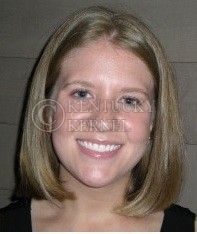Breast cancer threatens, affects everyone

October 21, 2010
“Young women don’t get breast cancer; it’s a disease for old ladies.”
That was the first thought that went through Andrea Applegate’s mind when she was diagnosed with breast cancer 10 years ago at the age of 33. But as Andrea learned, young women can—and do—get breast cancer. Approximately 7 percent of all cases of breast cancer are in women under 40.
According to the Young Survival Coalition, an organization that focuses on young women and breast cancer, there are more than 250,000 women living in the U.S. who were diagnosed with breast cancer under age 40.
Besides skin cancer, breast cancer is the most common cancer in women. Approximately 1 in 8 women in the U.S. will be diagnosed in her lifetime. Men can be diagnosed, too. The American Cancer Society (ACS) estimates that there are approximately 2,000 cases of breast cancer in men annually.
While the rates of breast cancer in young women are not as high as other age groups, it is still something for college women to pay attention to. Young women are underrepresented in breast cancer research studies. It is more difficult to detect breast cancer in younger women because the tissue is more dense.
“What do you do about dating and sexuality, and how to present yourself to a potential romantic interest when you have this situation where you look a little weird?” was a question that Andrea had after she went through treatment. She has since had reconstructive surgery and gotten married, but she stresses an important lesson: “Breasts don’t mean anything in the grand scheme of things.” She has come to understand and value her body, and hopes that young women will learn from her.
Performing regular BSE allows women to become familiar with the normal look and feel of their breasts. To perform a BSE, follow these recommendations from the ACS:
• Lie down and put your right arm over your head.
• Using your left hand, inspect your right breast. Move your hand up and down, inspecting all of your breast tissue.
• Feel for changes in your breast, above and below your collarbone, and in your armpit.
• Repeat the exam on your left breast using your right hand.
• Next, stand in front of a mirror with your hands on your hips and inspect your breasts for any changes in color, shape, size or dimpling of the skin.
• Speak to your health care provider immediately if you notice any changes to your breasts. Women should also have a clinical breast exam performed by their health care provider as part of a regular health examination.
If you have questions about breast cancer, please call 218-3264 to speak to a Health and Wellness Nurse. You can also call 323-APPT to schedule an appointment with a UHS clinician.





























































































































































